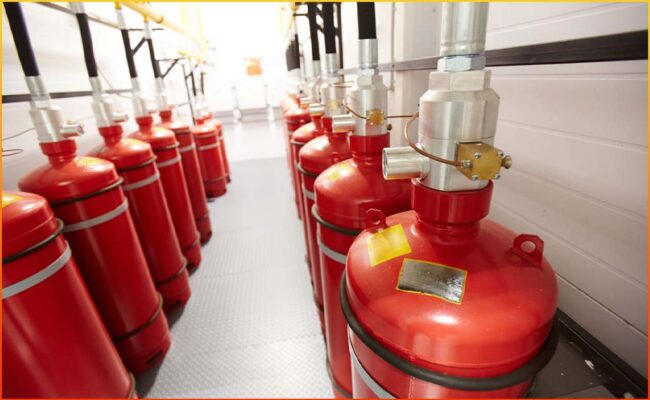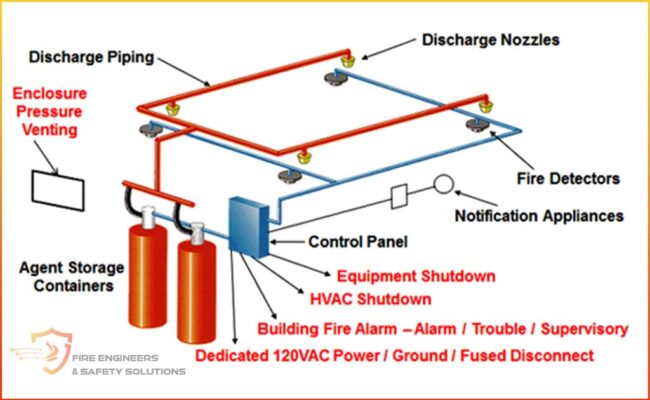Introduction
FM-200® (HFC-227ea) Clean Agent fire extinguishing systems are the most widely used of all the halocarbon gaseous agents, and is universally accepted as the best agent used to replace Halon 1301.FM-200® is a chemical agent used primarily in total flooding systems and has been installed in over 200,000 systems worldwide.
FM-200® fire suppression systems protect everything from computer rooms / data centres, telecommunications facilities, and switch gear to military vehicles, high tech medical applications, and pleasure craft to priceless works of art and historic landmarks around the world.
WHAT IS FM-200™?
FM-200™ (HFC-227ea) is formed from the elements carbon, fluorine and hydrogen (CF3CHFCF3-heptafluoropropane). The primary extinguishing mechanism of FM-200™ is heat absorption, with a secondary chemical contribution from the thermal decomposition of FM-200™ in the flame.
FM-200™ fire suppressant (HFC-227ea) can be safely used where people are present.
When used at standard design concentrations, it is safe for occupied spaces. FM-200™ leaves no residue. Most common metals, such as aluminum, brass, steel, cast iron, lead, stainless steel, and copper, as well as rubber, plastic, and electronic components, are unaffected when exposed to FM-200™ (HFC-227ea).
How Does FM-200™ Work?
FM-200™ suppresses fire by disrupting the fire triangle. The fire triangle is made up of heat, oxygen, and a fuel source, and by removing one of these elements, the fire is extinguished. FM-200™ removes the heat or free radicals, which interferes with the fire triangle’s chemical reaction to extinguish the fire. Clean agent fire suppression systems, like ones using FM-200™, can achieve fire extinguishing concentrations in 10 seconds or less.


